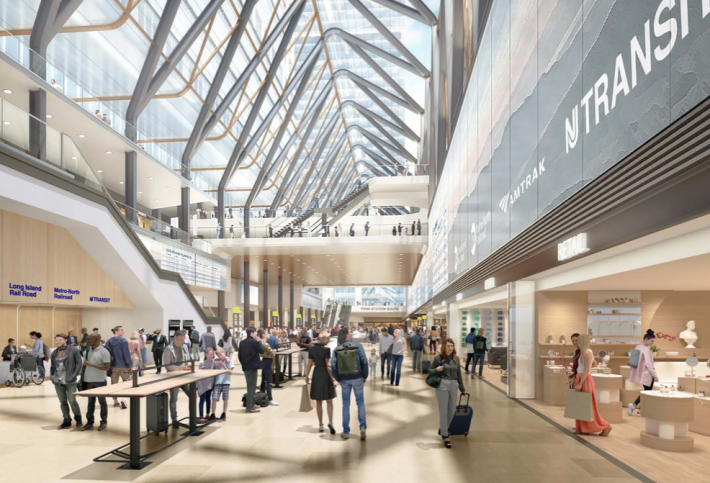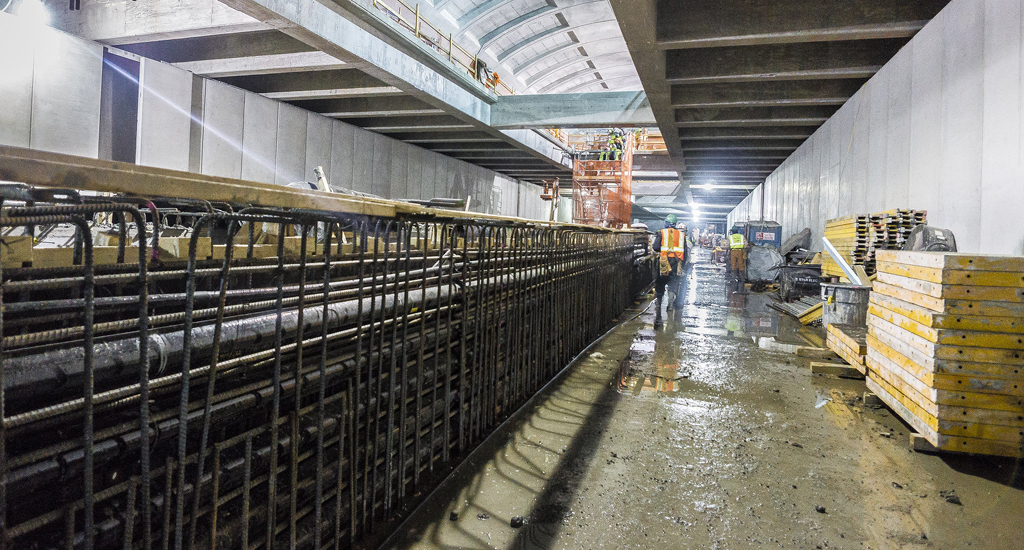When your transit system needs everything, where do you start?
That’s the puzzle faced by the MTA, a tangled mess of outdated infrastructure and bureaucracies, as it seeks to prioritize capital construction projects with a clear, comprehensive method known as the "20-Year Needs Assessment."
The 20-Year Needs Assessment essentially asks: what future does the MTA want, and what projects will get it there? The document’s goal is not to set specific price tags, but to scope every imaginable project idea the authority may want to build in the next two decades (potential needs), then to choose which ones make the cut (priority needs).
However, if this is about everything the MTA needs in the next 20 years, the wishlist released in October doesn’t cut it. This 20-Year Needs Assessment largely focuses on fixing crumbling parts over growing the transit system, whose leadership, in all fairness, does center the century-old infrastructure that sorely needs a facelift.
But the size of New York’s system is also stuck in the last century. The MTA has only built four new subway stations since 1930, mostly in Manhattan. By some measures, the public transit system has actually shrunk since FDR took office.
What‘s perhaps most alarming about the MTA’s assessment is its short list of “major” expansion projects considered to be worth assessing: Officials listed roughly 20 projects, many of which — like depots, or storage facilities — do not constitute service expansions. By prioritizing the needs and people of just one of the region’s three states, the Needs Assessment fails to accomplish its stated mission of bringing the New York region into the 21st century — half-filling a supposedly bottomless transit cookie jar with mostly stale cookies.
The MTA needs a better menu
The 20-Year Needs Assessment, then, is kind of like a diner menu: It has a random sampling of mediocre options across the MTA’s vast portfolio and just a few standouts. Let’s call the proposed Interborough Express, which would connect Jackson Heights to Bay Ridge along a dormant freight route, their great French onion soup. No new subway lanes, no groundbreaking regional connections.
I’m not qualified to nitpick every part of the MTA’s methodology or judge whether one project or another should have a priority. But if the MTA isn’t interested in much beyond short subway line extensions, rail line reactivations and service depots, then it needs a better menu. This already looks like a whittled-down list of politically agreeable projects — not based on “need,” but on expedience.
So what’s the hold-up for better transit in the tri-state region? Take Penn Station, the busiest train station in the Western Hemisphere — and what could be one super-cog in a fully realized regional rail network machine.
The Needs Assessment outlines extensive maintenance for Penn Station and in-the-works Metro-North line connections into the massive transit hub. Interestingly, however, the MTA doesn’t include its expansion plans for Penn in the assessment. They’re worth a glance, because it’s telling how the MTA conceives what New York’s transit ceiling could be.
Despite the potential to integrate three currently separate regional rail networks — all of which will actually meet at Penn once the Metro-North lines reach it — the MTA document does not even bother to mention it. As it currently stands, the MTA Needs Assessment doesn’t quite elevate Penn, Grand Central, Atlantic Terminal, Harlem-125th, or Jamaica to interconnected nodes of a greater whole. The document still conceives of the networks they serve (Long Island Rail Road, Metro-North, and NJ Transit) as standalone regional rail operations, even though they really all serve the goal of carrying commuters in, out, and through Manhattan. Plenty of riders take more than one of the systems in a single day. Heck, plenty of NJT’s trains already end up in Queens, at Sunnyside Yard.

We should aspire to a vision of Penn Station as a pass-through, not a terminus. Think of Penn as a super-transfer station or just another stop on the line instead of the place where all trains end and parallel suburban universes stack on top of each other. Imagine the other major stations worked like this, too, creating new and better ways to zig-zag across the world’s largest metropolitan area.
Thankfully, the tide could turn to make legit Penn Station upgrades a top MTA priority: the future of Madison Square Garden, whose presence above the station limit the hub’s potential, is less certain than it's ever been, and there’s federal money for Gateway and the MTA. But realizing Penn’s full potential — as a passthrough like formerly separate terminals in Berlin and Philly — is only possible when the MTA, NJT, and Amtrak are all on board with a shared regional rail network, and commit to expanding Penn Station with more tracks to the south plus two new tunnels into Queens. This expansion would allow Penn to become a legitimate pass-through station and hub of a combined regional rail network. Until then, the MTA’s plans will inevitably fall short and miss the big picture.
It's great that the MTA is considering a prettier Penn Station alongside some line extensions, train depots, and select bus service routes because transit is really a regional thing about getting people, regardless of what city or state they’re in, from point A to point B. As such, the 20-Year Needs Assessment falls flat as an isolated, unimaginative enterprise.
Time for a regional conversation
If we’re getting serious about transportation, we must have a regional conversation. Meaningful system expansion only happens when the MTA, NJT, Port Authority of New York and New Jersey, Amtrak, and a potpourri of county bus operators are aligned. Those Metro-North expansions to Penn were only possible with Amtrak on board. Ditto for the IBX, where the MTA and the city Department of Transportation needed to be speaking the same language.
The New York Metropolitan Transportation Council (NYMTC) and its other such panels in the tri-state region theoretically have the power to lead regional cooperation, but it's politicians, not planners, who guide the transit conversation in these parts. Planners I met with during my thesis research in 2017-18 spoke about cooperation among agency staffs, but said they got opposite orders from political appointees and governors' offices. Not only must transit agencies attempt their own assessments, they should be doing them together, because transportation is a regional essential service, and one that should be as apolitical an enterprise as possible to create greater possibilities. As of now, that’s not happening, and the only place where it has been brought up — Regional Plan Association — is a non-profit think tank without any authority.
Thankfully, RPA does not lack imagination or influence. RPA’s Fourth Regional Plan draws attention to the gaps in MTA’s expansion plans and where politicians and regional planners could be more ambitious.
What should the transportation network look like?
The region’s most compelling transit alternatives all involve reimagined cooperation, where NYC Subway lines run in Hoboken, and a NJT train ends up in Ronkonkoma. These aren’t runaway trains, they’re genuine possibilities.
Right now, trips like these are in separate networks, which riders pay for with two or three separate tickets and inconvenient transfers. These are practically impossible connections to make (and imagine) for most planners, politicians, and commuters. Today, that means it’s easy to live in White Plains and forget that Brighton Beach is as close as Poughkeepsie, or stay on Long Island and barely think of trips to New Jersey. My fellow Long Islanders might (half-jokingly) say “Why would I want to go to Jersey?” Here’s a better question: Why wouldn’t you want to easily be able to?
I’m writing this mid-air to Newark, and am definitely not looking forward to buying three different tickets and three clunky transfers with my suitcase. For policymakers, it’s not just the airports that should matter: it’s those trips to jobs, families, cultural assets, venues, beaches, and newfound possibilities. It’s easy to forget sometimes, but Greater New York is the world’s largest metropolis by area. The best way to connect towns miles apart — whether you’re measuring by wallet, clock, or CO2 — is with a truly regional rail network.
The same goes for New York’s outer boroughs, where you can’t use a train or subway between Queens and the Bronx without going through Manhattan, or between Staten Island and anywhere else. Brooklyn is still waiting for the Utica Avenue subway — which according to the needs assessment may wind up being bus rapid transit.
Simply put, for the next 20 years and beyond, the MTA needs to work with the rest of the region to create world-class public transit across the region — and not go it alone. After all, why should the "Greatest City on Earth" settle for anything less?






